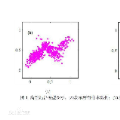Snoring is one of the most prominent symptoms of Obstructive Sleep Apnea-Hypopnea Syndrome (OSAH), a highly prevalent disease that causes repetitive collapse and cessation of the upper airway. Thus, accurate snore sound monitoring and analysis is crucial. However, the traditional monitoring method polysomnography (PSG) requires the patients to stay at a sleep clinic for the whole night and be connected to many pieces of equipment. An alternative and less invasive way is passive monitoring using a smartphone at home or in the clinical settings. But, there is a challenge: the environment may be shared by people such that the raw audio may contain the snore activities of the bed partner or other person. False capturing of the snoring activity could lead to critical false alarms and misdiagnosis of the patients. To address this limitation, we propose a hypothesis that snore sound contains unique identity information which can be used for user recognition. We analyzed various machine learning models: Gaussian Mixture Model (GMM), GMM-UBM (Universial Background Model), and a Deep Neural Network (DNN) on MPSSC - an open source snoring dataset to evaluate the validity of our hypothesis. Our results are promising as we achieved around 90% accuracy in identification and verification tasks. This work marks the first step towards understanding the practicality of snore based user monitoring to enable multiple healthcare applicaitons.
翻译:鼻涕是阻碍睡眠的Apnea-Hypompnea综合症(OSAH)最突出的症状之一,它是一种高度流行的疾病,引起重复性崩溃和上方空气管道停止。因此,准确的鼻孔声音监测和分析至关重要。然而,传统的监测方法多元合成术(PSG)要求病人在夜间呆在睡眠诊所,并与许多设备连接。另一种替代和较少侵入的方法是在家里或临床环境中使用智能手机进行被动监测。但是,存在一种挑战:人们可能共享环境,以致于原始音频可能包含床伙伴或其他人的鼻涕活动。错误地捕捉鼻活动可能导致严重的错误警报和对病人的错误诊断。为解决这一问题,我们提出了一个假设,即鼻孔声音包含独特的身份信息,可用于用户识别。我们分析了各种机器学习模型:高智囊混合模型(GMMM)、GMM-UMMM(Unicisicial背景模型),以及深入的神经网络(DNeural Procialal Proflience),这是我们已实现的公开数据定位的源。




